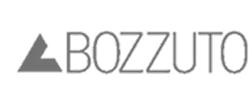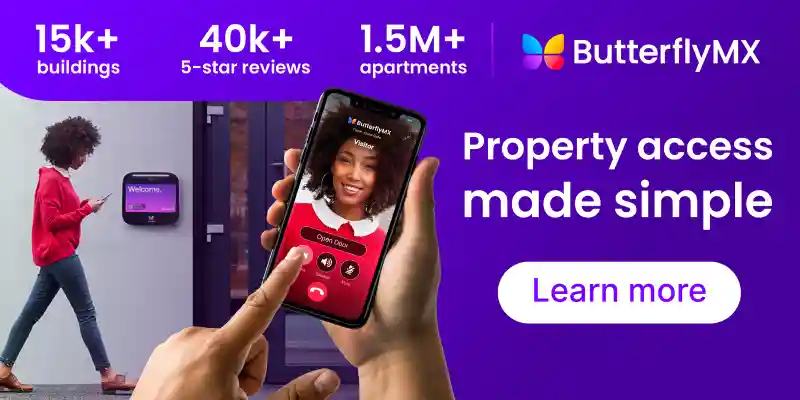Key takeaways
- Smart building technology developments in Chicago real estate improve operations and attract tenants.
- Energy management systems and sustainability tools help reduce costs and meet city efficiency goals.
- Smart access control enhances security and convenience for residents, staff, and visitors.
- Predictive maintenance and data-driven management improve building performance and reduce downtime.
- Investing in smart technology increases property value and streamlines daily operations.

Smart building technology continues to transform the way properties are designed, managed, and experienced in Chicago. From energy-efficiency tools to advanced access-control systems, local developers and property managers are embracing innovation to meet the city’s evolving needs. Chicago’s real estate market has long been a leader in sustainable design and modernization, making it an ideal environment for the adoption of smart technology.
This post explores what smart building technology is, highlights five key developments shaping Chicago’s real estate landscape, and explains why investing in these solutions benefits both property owners and residents.
Navigate this post:
- What is smart building technology?
- 5 smart building technology developments in Chicago real estate
- Benefits of investing in smart technology in Chicago, IL
- ButterflyMX: Smart building technology for every property
- Smart building technology developments in Chicago real estate FAQs
What is smart building technology?
Smart building technology refers to the integration of connected devices, data analytics, and automated systems that enhance how buildings operate. These systems rely on sensors, cloud-based platforms, and artificial intelligence to manage energy, security, and communication across a property.
At its core, smart building technology improves operational efficiency while creating more convenient and sustainable environments. It allows building managers to monitor systems in real time, reduce maintenance costs, and respond quickly to tenant or resident needs. Examples include automated HVAC systems, intelligent lighting, and mobile-enabled access control.
In Chicago, many new developments and retrofits are using these technologies to improve building performance and attract tech-savvy tenants. With a strong focus on sustainability and digital transformation, the city’s real estate sector is moving toward smarter, more connected spaces.
5 smart building technology developments in Chicago real estate
Chicago’s mix of historic buildings and modern developments offers a unique testing ground for smart technology. Property owners are combining innovation with practicality to enhance efficiency and comfort.
The following five developments highlight how smart building technology is reshaping Chicago real estate:
- Energy management and sustainability systems
- Smart access control and security integration
- Predictive maintenance and smart sensors
- Smart lighting and occupancy controls
- Data-driven building management platforms
1. Energy management and sustainability systems
One of the most notable developments in Chicago is the integration of smart energy management systems. These systems use data-driven tools to optimize energy use across lighting, HVAC, and other building operations.
In high-rise apartments and commercial offices, connected meters and automated sensors track usage patterns to identify inefficiencies. Property managers can then adjust systems remotely or schedule operations based on occupancy data. This approach supports Chicago’s sustainability goals and helps owners comply with energy benchmarking ordinances.
2. Smart access control and security integration
Security remains a top priority for Chicago’s property managers. Smart access control systems have become a preferred solution for both residential and commercial properties. These systems allow residents, employees, and visitors to access buildings using smartphones, fobs, or facial recognition.
Additionally, modern systems can integrate with video surveillance, visitor management tools, and delivery solutions. Property staff can monitor activity from a centralized dashboard, improving safety and operational visibility. For multi-tenant buildings, this technology also simplifies access for maintenance staff, delivery couriers, and guests.
3. Predictive maintenance and smart sensors
Predictive maintenance is another emerging trend in Chicago real estate. With connected sensors installed on mechanical systems, building operators can identify maintenance issues before they become costly repairs.
For example, sensors can detect changes in air pressure, water flow, or temperature that signal potential problems in HVAC systems or plumbing. By collecting and analyzing this data, property teams can schedule timely repairs, minimize downtime, and extend the lifespan of building equipment.
This proactive approach reduces operational disruptions and helps maintain tenant satisfaction, which is an important factor in Chicago’s competitive rental and office markets.
4. Smart lighting and occupancy controls
Lighting automation continues to evolve as developers incorporate smart building design principles. In Chicago’s newer mixed-use and office developments, lighting systems automatically adjust based on occupancy and natural light levels.
This not only lowers energy costs but also creates more comfortable environments. Tenants benefit from consistent lighting conditions, while owners save on long-term operating expenses. Some systems even integrate with scheduling software, allowing lights to turn off automatically after business hours or during unoccupied periods.
5. Data-driven building management platforms
Finally, integrated building management platforms are becoming standard in many Chicago properties. These platforms collect data from multiple systems like energy, security, HVAC, and occupancy, and present it in a single interface.
Property managers can use these insights to make better decisions about maintenance schedules, staffing, and resource allocation. For example, they might identify which floors consume the most energy or track access activity across various entrances. This level of visibility supports efficiency and compliance while improving overall tenant experiences.
Discover how ButterflyMX works:
Benefits of investing in smart technology in Chicago, IL
Investing in smart building technology offers both immediate and long-term returns for property owners in Chicago. Beyond improving operational efficiency, these systems add value to buildings and appeal to a growing segment of renters and businesses seeking connected living and workspaces.
Some key benefits include:
- Increased energy efficiency. Smart systems reduce waste and optimize energy efficiency across HVAC, lighting, and other utilities. Lower energy costs translate to better profit margins and reduced environmental impact.
- Improved property value. Buildings with integrated smart systems are more attractive to tenants and investors. Technology-driven amenities can justify higher rental rates and faster lease-up times.
- Streamlined operations. Centralized management tools enable property teams to remotely manage multiple systems, saving time and resources. This simplifies day-to-day management across portfolios.
- Enhanced security and convenience. Smart access control and monitoring tools improve safety while offering a modern, user-friendly experience for residents and staff.
- Better sustainability reporting. With Chicago’s focus on energy performance, smart building data supports compliance with local energy disclosure requirements and sustainability initiatives.
ButterflyMX: Smart building technology for every property
ButterflyMX is one of the most trusted names in property technology, offering smart access control systems that fit the needs of both residential and commercial properties in Chicago. Its cloud-based platform simplifies how people access and manage buildings, improving security and convenience for all users.
Key features and benefits of ButterflyMX include:
- Mobile access. Residents and staff can unlock doors, gates, and elevators directly from their smartphones.
- Video Intercom functionality. Users can visually verify visitors before granting entry, adding an extra layer of security.
- Visitor and delivery management. Property managers can issue temporary Visitor Passes for guests, service providers, or package deliveries.
- Seamless integrations. ButterflyMX integrates with property management systems and smart locks, enabling unified control of access points.
Smart building technology developments in Chicago real estate FAQs
- Is smart building technology expensive to install?
- Can smart systems integrate with existing infrastructure?
- How does smart building technology support sustainability in Chicago?
Is smart building technology expensive to install?
Costs vary depending on the scope of integration and building size. However, many Chicago property owners find that energy savings, reduced maintenance, and higher tenant satisfaction offset the initial investment.
Can smart systems integrate with existing infrastructure?
Yes. Most modern systems are designed to integrate with existing HVAC, lighting, and security networks. This makes it easier for property managers to upgrade their buildings without major renovations.
How does smart building technology support sustainability in Chicago?
By monitoring and optimizing energy use, smart systems help buildings meet local sustainability goals and reduce carbon emissions. Data analytics also make it easier to comply with Chicago’s environmental reporting requirements.

Get your free quote!
Fill in the form below, and we'll email you right back.
Want a free quote?
Fill in the form below, and we'll email you right back.
You’ll be redirected shortly...






